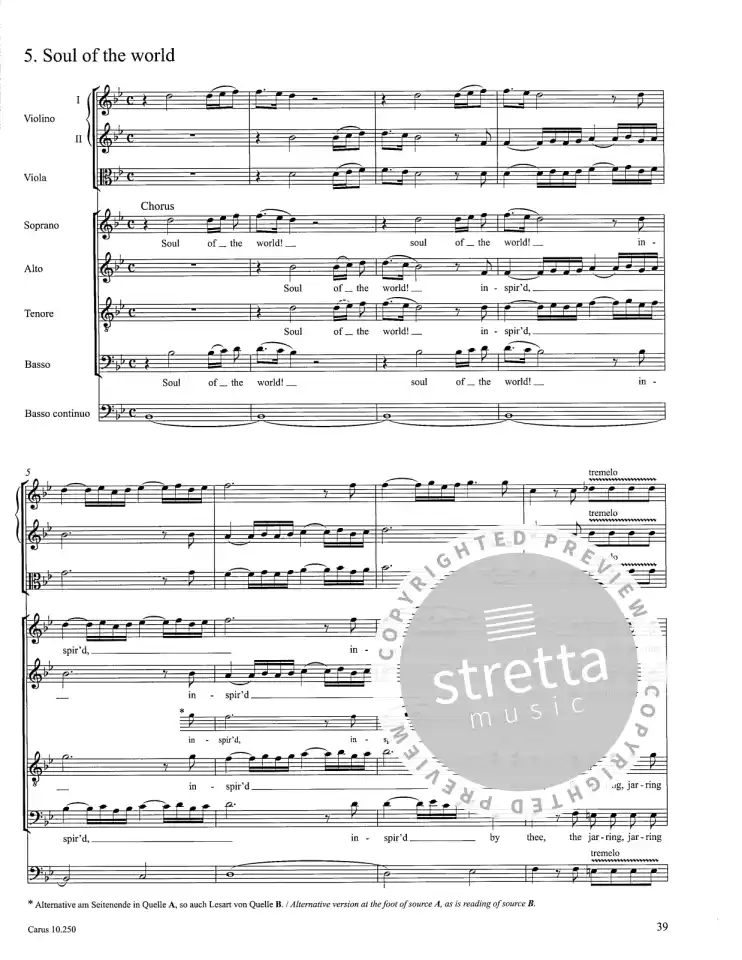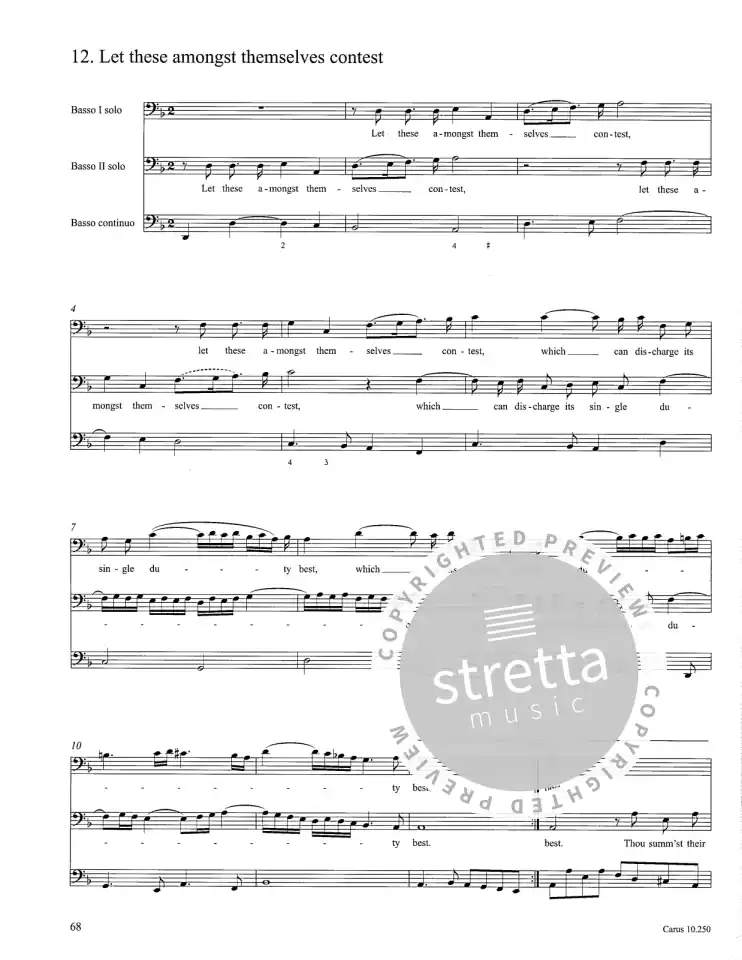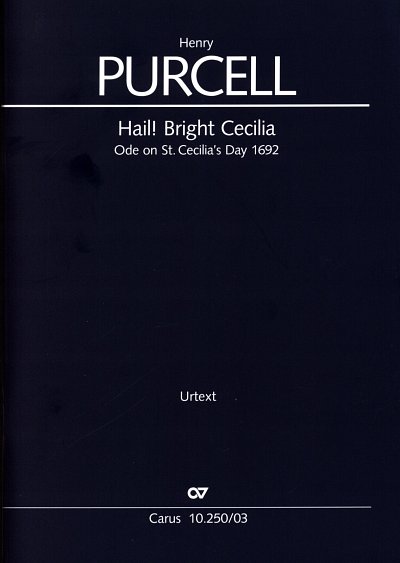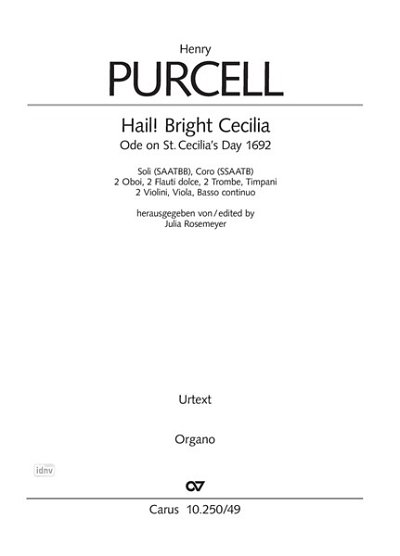Scoring: Soli SAATBB, Coro SATB (and SSAATB), 2 Bfl, 2 Ob, 2 Tr, Timp, 2 Vl, Va, Bc
“Hail! bright Cecilia, hail to thee. Great patroness of us and harmony!” – this exclamation opens the final chorus of Henry Purcell’s eponymous Ode to St. Cecilia from 1692. A paean to the power of music, the work is one of the undoubted masterpieces of English choral odes of that time.
A resolution of the Musical Society of London in 1683 launched the great tradition of annual celebrations for St. Cecilia’s Day (November 22), featuring a church service followed by performances of specially composed music. Over the years, Purcell wrote several odes for the occasion, of which this example from 1692 is one of the most popular. Four decades later, Handel would also contribute to the celebrations with his Alexander’s Feast, HWV 75 (Carus 55.075), and his Ode for St. Cecilia’s Day, HWV 76 (Carus 55.076).
Purcell’s magnificent music, which features a huge range of tonal color and form, offers delightful parts for a variety of solo, ensemble, and choral settings. With its richly expressive palette, the Ode to St. Cecilia is an extremely rewarding work by the “Orpheus Britannicus”, as Purcell was admiringly called by contemporaries.
- Festive, rousing ode to music
- Highlight of the "choral ode" genre in the 17th century









